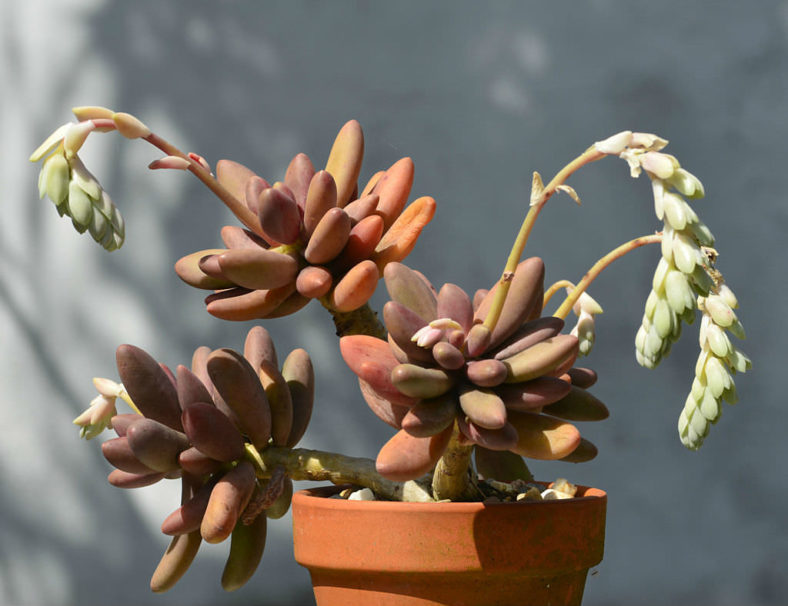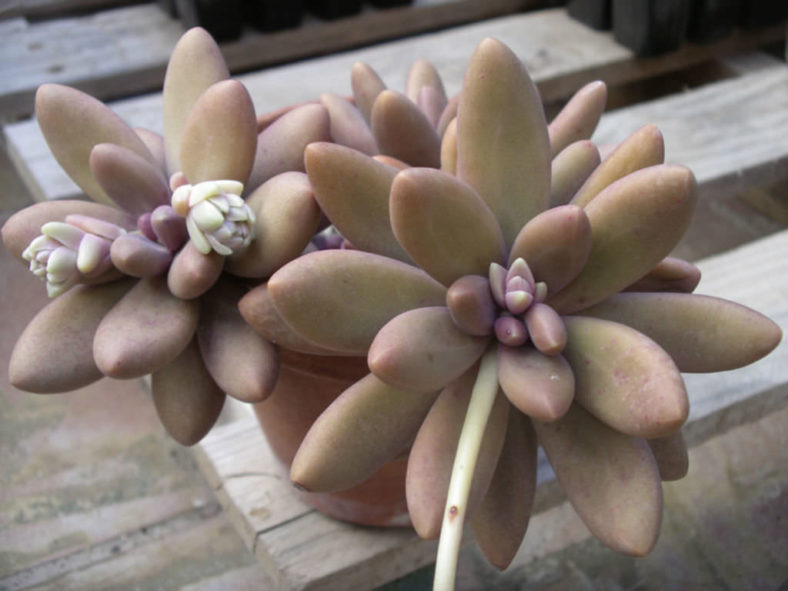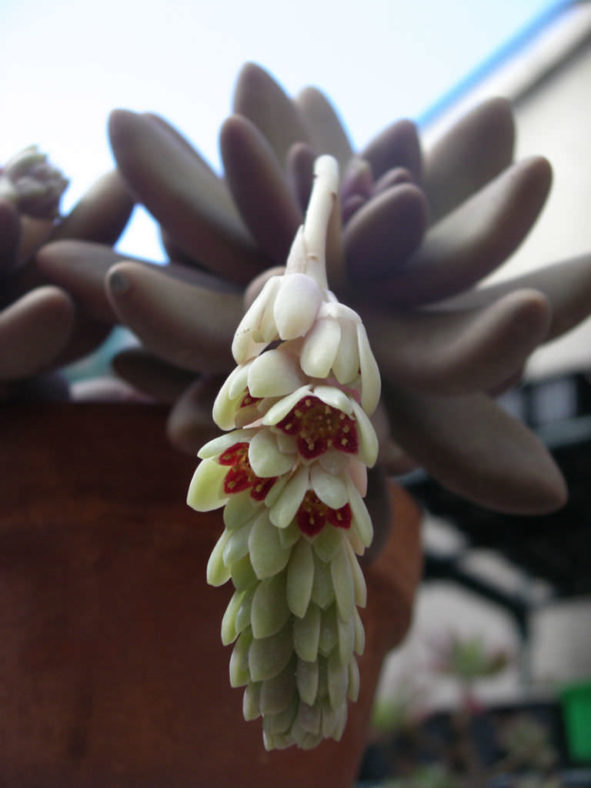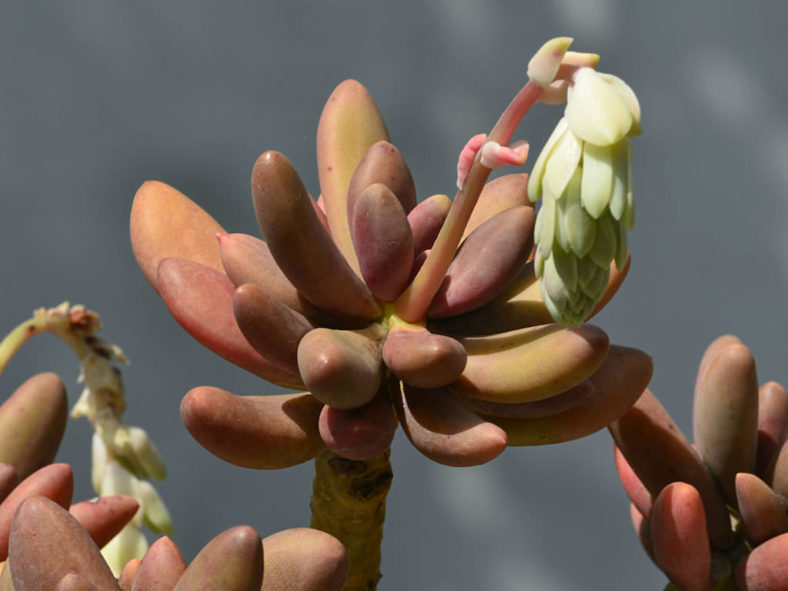Scientific Name
Pachyphytum 'Captain Jessop'
Scientific Classification
Family: Crassulaceae
Subfamily: Sedoideae
Tribe: Sedeae
Subtribe: Sedinae
Genus: Pachyphytum
Description
Pachyphytum 'Captain Jessop' is a beautiful small succulent with descending or hanging stems and leaves arranged in rosettes at the end of the stem. The leaves range from dark green to violet-red and can grow up to 4 inches (10 cm) long.
The flowers have red-orange petals surrounded by fleshy greenish-white sepals. They appear in dense clusters on slender, arching stalks, usually in spring.

Hardiness
USDA hardiness zones 10a to 11b: from 30 °F (−1.1 °C) to 50 °F (+10 °C).
How to Grow and Care
Pachyphytum does not tolerate frosts well. Temperatures below 20 °F (-6 °C) will kill the plant, and temperatures that may go below 45 °F (7 °C) during the extended period should be avoided. It tolerates high heat and intense sunlight. As with most succulents from the Crassulaceae family, Pachyphytum can tolerate (and even appreciate) poor soil conditions so long as they are well-draining. It can thrive in full or partial sunlight.
Allow the soil to dry out before watering, and avoid getting water on the leaves. The plants will require more water in winter as winter begins its active growth season. If you are unsure when to water your plant, watch the lowermost leaves for signs of drying and water them then. Pachyphytum is far more likely to survive under-watering than overwatering. The thick, fleshy leaves will appear wilted and slightly "under-full" when they need water.
One of the most common pests to houseplants is the mealybug, and your Pachyphytum may fall prey to this pest. The symptoms of a mealybug infestation are slowed or stopped growth (though in summer, this is a typical sign of dormancy). If this occurs without apparent cause, remove the plant from the pot and examine the roots or look at the leaf-stem junctions.
Learn more at How to Grow and Care for Pachyphytum.
Origin
Pachyphytum 'Captain Jessop' is a hybrid created by the late Captain Jessop. It results from a cross between Pachyphytum bracteosum and Pachyphytum viride.
Links
- Back to genus Pachyphytum
- Succupedia: Browse succulents by Scientific Name, Common Name, Genus, Family, USDA Hardiness Zone, Origin, or cacti by Genus
Photo Gallery
Click on a photo to see a larger version.



